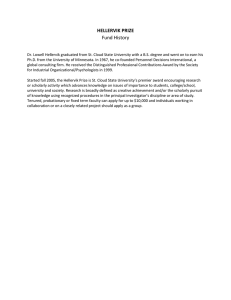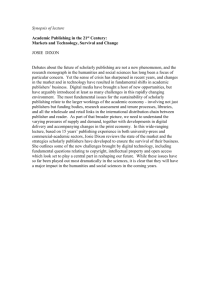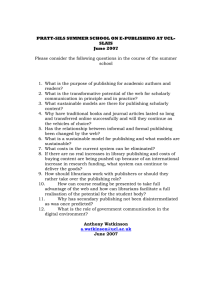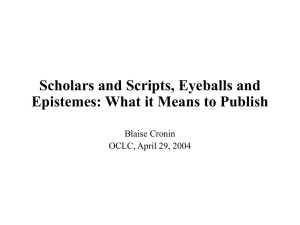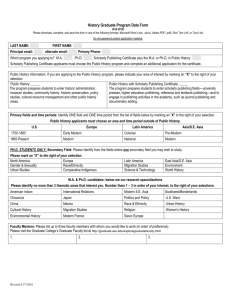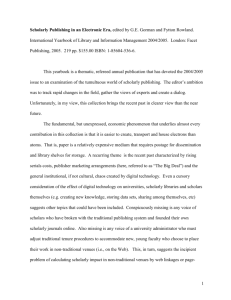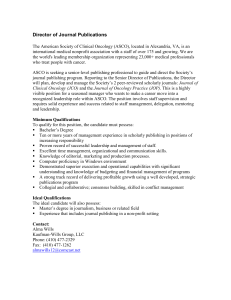Document
advertisement
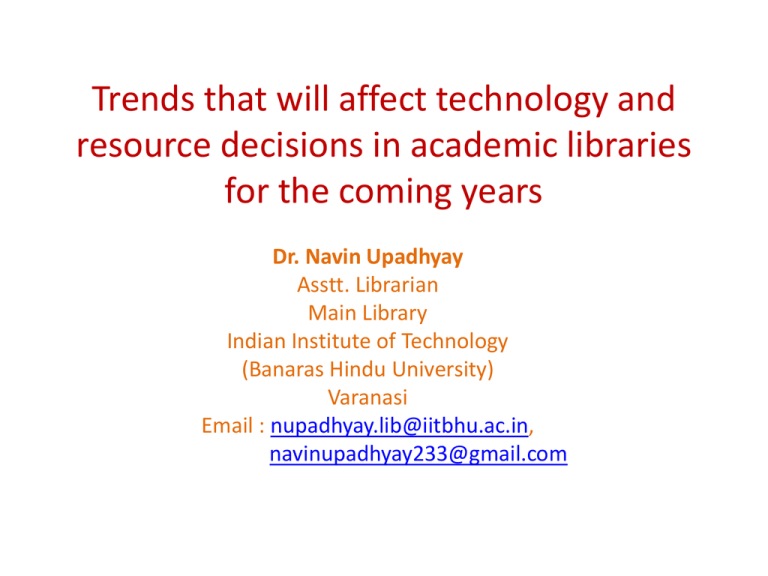
Trends that will affect technology and resource decisions in academic libraries for the coming years Dr. Navin Upadhyay Asstt. Librarian Main Library Indian Institute of Technology (Banaras Hindu University) Varanasi Email : nupadhyay.lib@iitbhu.ac.in, navinupadhyay233@gmail.com Trends that will affect technology and resource decisions Laptops , Media Tablets and Beyond • • • • • Trends: Bringing personal devices at library has become the norm, not the exception. Wireless access of Internet and LSS (Laptop Lending Services, not common in Indian academic institutions) is increasing. Changing Information Seeking Behavior of library users ( Users expect to have access to information resources from Challenges : Changing nature of portable devices ( in terms of hardware and software) Changes in the spaces and environment in which these devices are used ( technology infrastructure, policies, security and management challenge) Provide information to users where they want : Does not matter in which form or on which device Trends that will affect technology and resource decisions Mobile Centric Applications and Interfaces • Trends: No of mobile users are increasing ( According to the 2013 “ICT Facts and Figures” the mobile market consists of over 6.8 billion subscribers, with a majority living in developing countries) Mobile friendly websites , e-resources, databases and native applications are increasing. • • • Challenges : To make available the resources and services of library on palm of users hand. How to stimulate intention for use of library apps and how to meet users needs? To change the technology ( hardware and software) as per the users need. • Trends that will affect technology and resource decisions New Scholarly Communication and Publishing Models • • • • Trends: Education paradigms are shifting to include online learning, hybrid learning and collaborative models. Massive open online courses are being widely explored as alternatives and supplements to traditional university courses, particularly in science, technology, engineering, and medicine discipline. Challenges : Challenge to manage the new scholarly communication and publishing models : opportunity to get involved. Challenge to commonly provided digital repository services, author copyright advice, digitization services, and management of research datasets, as well as metadata creation, cataloging, and digital preservation with publishers. Trends that will affect technology and resource decisions Open Educational Resources • • • Trends : Openness- concepts like open content, open data, and open resources, along with notions of transparency and easy access to data and information-is becoming a value. Massive open online course materials are being widely explored as alternatives and supplements to traditional university course text books, especially in ISTEM disciplines. Challenges: To include these resources in library holdings with proper quality insurance and integrate with the purchased/subscribed/leased resources. Trends that will affect technology and resource decisions The Internet of Everything Trends : • Remote sensing of everything is now being part of the network . • Challenges : Issue to maintain these devices and privacy type sensitive issues Trends that will affect technology and resource decisions Online Learning • • • Trends : On campuses around the world, virtually every aspect of how students and researchers connect with institutions and each other to learn online is being reworked, rethought, and redone to make it more effective and popular. As new pedagogies emphasize personalized STEM+ learning, there is a growing demand for learner-centered online opportunities more than ever before. Challenges : The renewed focus on online learning has opened the door to new perspectives on old challenges, such as assessment, learning support, and how to ensure quality at scale. Trends that will affect technology and resource decisions Cloud Based Tools Trends: • Libraries are using the cloud for putting together user resources, i.e. using Software as a Service (SaaS), such as in library catalogues, World Cat, Google docs, and the aggregated subject gateways like SUMMON, and others; the web Platform as a Service (PaaS) as in the use of Google App Engine; or Infrastructure as a Service (IaaS) as in the use of D-Space, FEDORA, and others. • IT organizations are rapidly moving towards a world where they can offer a portfolio of cloud services, both public and private, to meet the diverse requirements of their applications. • Challenges : Apply technology for the library services Trends that will affect technology and resource decisions Management of Big Data • Trends : Big data has quickly emerged as a significant challenge for IT leaders and it may pose challenge to the library professionals in coming years. • Challenges : To develop new skills to effectively use these technologies (Apache Hadoop etc) and manage Big Data for service to the user. Conclusion The changing nature of scholarly publishing and information seeking behavior of users have created a large number of users which is equipped with the latest technologies and having mind set to change the way they get information from the library or through the social networking services even on the cost of changing their devices. To cater the academic needs of such type of users which will increase in multifold in near future, is a big challenge for the library administrators. The decision of resources and technology to support these user’s requirements and the services to meet out the user’s expectation is going to be the main challenge in coming years for the librarians.
